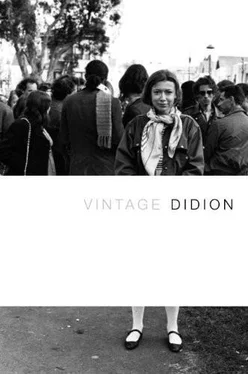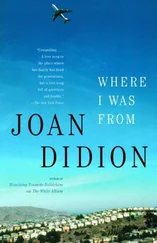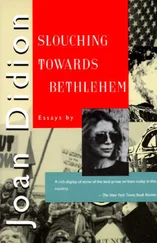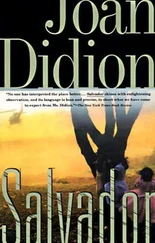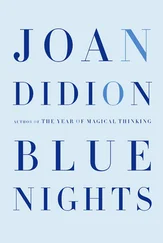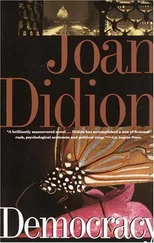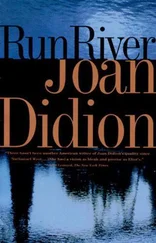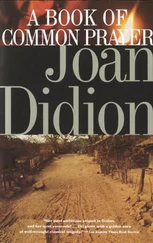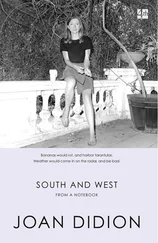Joan Didion - Vintage Didion
Здесь есть возможность читать онлайн «Joan Didion - Vintage Didion» весь текст электронной книги совершенно бесплатно (целиком полную версию без сокращений). В некоторых случаях можно слушать аудио, скачать через торрент в формате fb2 и присутствует краткое содержание. Год выпуска: 2004, Издательство: Vintage Books, Жанр: Биографии и Мемуары, Публицистика, на английском языке. Описание произведения, (предисловие) а так же отзывы посетителей доступны на портале библиотеки ЛибКат.
- Название:Vintage Didion
- Автор:
- Издательство:Vintage Books
- Жанр:
- Год:2004
- ISBN:нет данных
- Рейтинг книги:4 / 5. Голосов: 1
-
Избранное:Добавить в избранное
- Отзывы:
-
Ваша оценка:
- 80
- 1
- 2
- 3
- 4
- 5
Vintage Didion: краткое содержание, описание и аннотация
Предлагаем к чтению аннотацию, описание, краткое содержание или предисловие (зависит от того, что написал сам автор книги «Vintage Didion»). Если вы не нашли необходимую информацию о книге — напишите в комментариях, мы постараемся отыскать её.
Vintage Didion — читать онлайн бесплатно полную книгу (весь текст) целиком
Ниже представлен текст книги, разбитый по страницам. Система сохранения места последней прочитанной страницы, позволяет с удобством читать онлайн бесплатно книгу «Vintage Didion», без необходимости каждый раз заново искать на чём Вы остановились. Поставьте закладку, и сможете в любой момент перейти на страницу, на которой закончили чтение.
Интервал:
Закладка:
Carlos Prío is now buried himself at Woodlawn Park Cemetery in Miami, Section Three, not far from Gerardo Machado, in a grave marked by a six-foot marble stone on which the flag of Cuba waves in red, white, and blue ceramic tile. CARLOS PRÍO SOCARRÁS 1903–1977, the stone reads, and directly below that, as if Carlos Prío Socarrás’s main hedge against oblivion had been that period at the University of Havana when he was running actions against Gerardo Machado: MIEMBRO DEL DIRECTORIO ESTUDIANTIL UNIVERSITARIO 1930. Only then does the legend PRESIDENTE DE LA REPúBLICA DE CUBA 1948–1952 appear, an anticlimax. Presidencies are short and the glamours of action long, there among the fallen frangipani and crepe myrtle blossoms at Woodlawn Park Cemetery in Miami. “They say that I was a terrible president of Cuba,” Carlos Prío once said to Arthur M. Schlesinger, Jr., during a visit to the Kennedy White House some ten years into the quarter-century Miami epilogue to his four-year Havana presidency. “That may be true. But I was the best president Cuba ever had.”
Many Havana epilogues have been played in Florida, and some prologues. Florida is that part of the Cuban stage where declamatory exits are made, and side deals. Florida is where the chorus waits to comment on the action, and sometimes to join it. The exiled José Martí raised money among the Cuban tobacco workers in Key West and Tampa, and in 1894 attempted to mount an invasionary expedition from north of Jacksonville. The exiled Fidel Castro Ruz came to Miami in 1955 for money to take the 26 Julio into the Sierra Maestra, and got it, from Carlos Prío. Fulgencio Batista had himself come back from Florida to take Havana away from Carlos Prío in 1952, but by 1958 Fidel Castro, with Carlos Prío’s money, was taking it away from Fulgencio Batista, at which turn Carlos Prío’s former prime minister tried to land a third force in Camagüey Province, the idea being to seize the moment from Fidel Castro, a notably failed undertaking encouraged by the Central Intelligence Agency and financed by Carlos Prío, at home in Miami Beach.
This is all instructive. In the continuing opera still called, even by Cubans who have now lived the largest part of their lives in this country, el exilio , the exile, meetings at private houses in Miami Beach are seen to have consequences. The actions of individuals are seen to affect events directly. Revolutions and counterrevolutions are framed in the private sector, and the state security apparatus exists exclusively to be enlisted by one or another private player. That this particular political style, indigenous to the Caribbean and to Central America, has now been naturalized in the United States is one reason why, on the flat coastal swamps of South Florida, where the palmettos once blew over the detritus of a dozen failed booms and the hotels were boarded up six months a year, there has evolved since the early New Year’s morning in 1959 when Fulgencio Batista flew for the last time out of Havana (for this flight, to the Dominican Republic on an Aerovías Q DC-4, the women still wore the evening dresses in which they had gone to dinner) a settlement of considerable interest, not exactly an American city as American cities have until recently been understood but a tropical capital: long on rumor, short on memory, over-built on the chimera of runaway money and referring not to New York or Boston or Los Angeles or Atlanta but to Caracas and Mexico, to Havana and to Bogotá and to Paris and Madrid. Of American cities Miami has since 1959 connected only to Washington, which is the peculiarity of both places, and increasingly the warp.
— 1987
MIAMI TWO
Guillermo Novo was known to FBI agents and federal prosecutors and the various personnel who made up “terrorist task forces” on the eastern seaboard of the United States as one of the Novo brothers, Ignacio and Guillermo, two exiles who first came to national attention in 1964, when they fired a dud bazooka shell at the United Nations during a speech by Che Guevara. There were certain farcical elements here (the embattled brothers bobbing in a small boat, the shell plopping harmlessly into the East River), and, in a period when Hispanics were seen by many Americans as intrinsically funny, an accent joke, this incident was generally treated tolerantly, a comic footnote to the news. As time went by, however, the names of the Novo brothers began turning up in less comic footnotes, for example this one, on page 93 of volume X of the report made by the House Select Committee on Assassinations on its 1978 investigation of the assassination of John F. Kennedy:
(67) Immunized executive session testimony of Marita Lorenz, May 31, 1978. Hearings before the House Select Committee on Assassinations. Lorenz, who had publicly claimed she was once Castro’s mistress (
Miami News
, June 15, 1976), told the committee she was present at a September 1963 meeting in Orlando Bosch’s Miami home during which Lee Harvey Oswald, Frank Sturgis, Pedro Diaz Lanz, and Bosch made plans to go to Dallas…. She further testified that around November 15, 1963, she, Jerry Patrick Hemming, the Novo brothers, Pedro Diaz Lanz, Sturgis, Bosch, and Oswald traveled in a two-car caravan to Dallas and stayed in a motel where they were contacted by Jack Ruby. There were several rifles and scopes in the motel room…. Lorenz said she returned to Miami around November 19 or 20…. The committee found no evidence to support Lorenz’s allegation.
Guillermo Novo himself was among those convicted, in a 1979 trial that rested on the demonstration of connections between the Cuban defendants and DINA, the Chilean secret police, of the assassination in Washington of the former Chilean diplomat Orlando Letelier and of the Institute for Policy Studies researcher who happened to be with him when his car blew up, Ronni Moffitt. This conviction was overturned on appeal (the appellate court ruled that the testimony of two jailhouse informants had been improperly admitted), and in a 1981 retrial, after the federal prosecutors turned down a deal in which the defense offered a plea of guilty on the lesser charge of conspiracy, plus what Guillermo Novo’s attorney called “a sweetener,” a “guarantee” by Guillermo Novo “to stop all violence by Cuban exiles in the United States,” Guillermo Novo was acquitted.
I happened to meet Guillermo Novo in 1985, one Monday morning when I was waiting for someone in the reception room at WRHC–Cadena Azul, Miami, a station the call letters of which stood for Radio Havana Cuba. There was about this meeting nothing of either moment or consequence. A man who introduced himself as “Bill Novo” just appeared beside me, and we exchanged minor biography for a few minutes. He said that he had noticed me reading a letter framed on the wall of the reception room. He said that he was the sales manager for WRHC, and had lived in Miami only three years. He said that he had, however, lived in the United States since 1954, mostly in New York and New Jersey. He was a small sharp-featured man in a white tropical suit, who in fact spoke English with an accent that suggested New Jersey, and he had a way of materializing and dematerializing sideways, of appearing from and then sidling back into an inner office, which was where he retreated after he gave me his business card, the exchange of cards remaining a more or less fixed ritual in Cuban Miami. GUILLERMO NOVO SAMPOL, the card read. Gerente de Ventas, WRHC–Cadena Azul .
That it was possible on a Monday morning in Miami to have so desultory an encounter with one of the Novo brothers seemed to me, perhaps because I was not yet accustomed to a rhythm in which dealings with DINA and unsupported allegations about Dallas motel rooms could be incorporated into the American business day, remarkable, and later that week I asked an exile acquaintance who was familiar with WRHC if the Guillermo Novo who was the sales manager there was in fact the Guillermo Novo who had been tried in the Letelier assassination. There had been, my acquaintance demurred, “a final acquittal on the Letelier count.” But it was, I persisted, the same man. My acquaintance had shrugged impatiently, not as if he thought it best not mentioned, but as if he did not quite see the interest. “Bill Novo has been a man of action,” he said. “Yes. Of course.”
Читать дальшеИнтервал:
Закладка:
Похожие книги на «Vintage Didion»
Представляем Вашему вниманию похожие книги на «Vintage Didion» списком для выбора. Мы отобрали схожую по названию и смыслу литературу в надежде предоставить читателям больше вариантов отыскать новые, интересные, ещё непрочитанные произведения.
Обсуждение, отзывы о книге «Vintage Didion» и просто собственные мнения читателей. Оставьте ваши комментарии, напишите, что Вы думаете о произведении, его смысле или главных героях. Укажите что конкретно понравилось, а что нет, и почему Вы так считаете.
